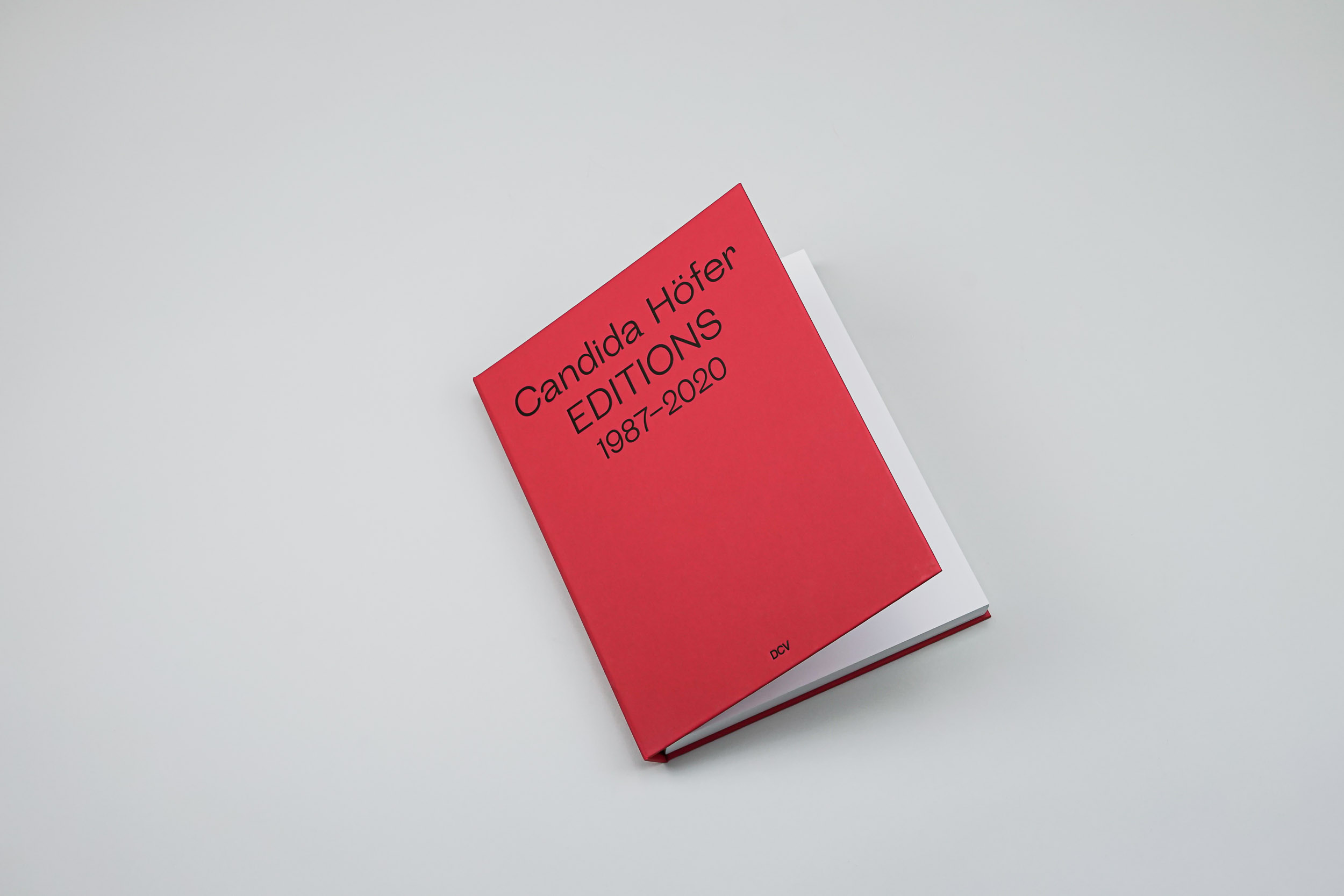

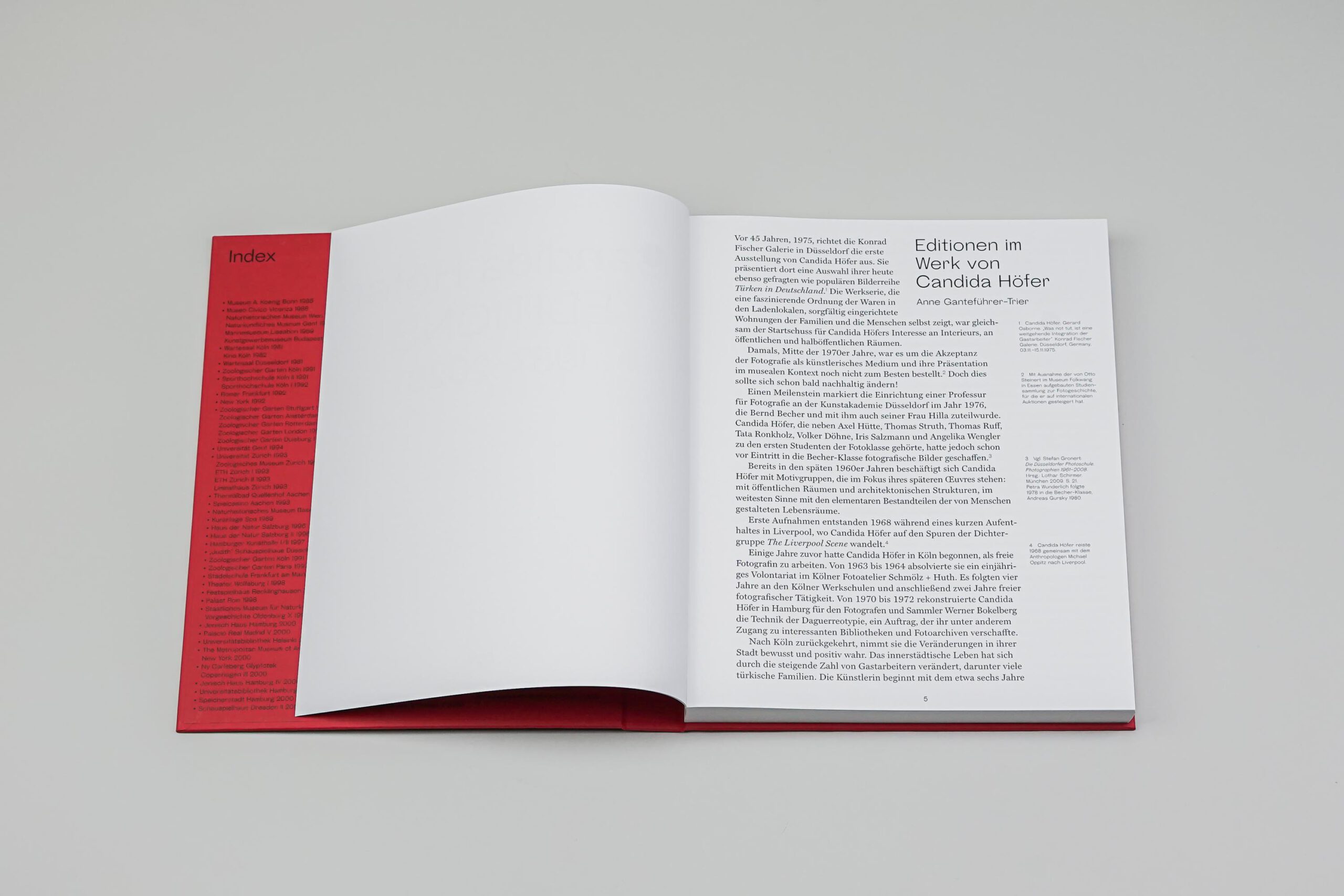
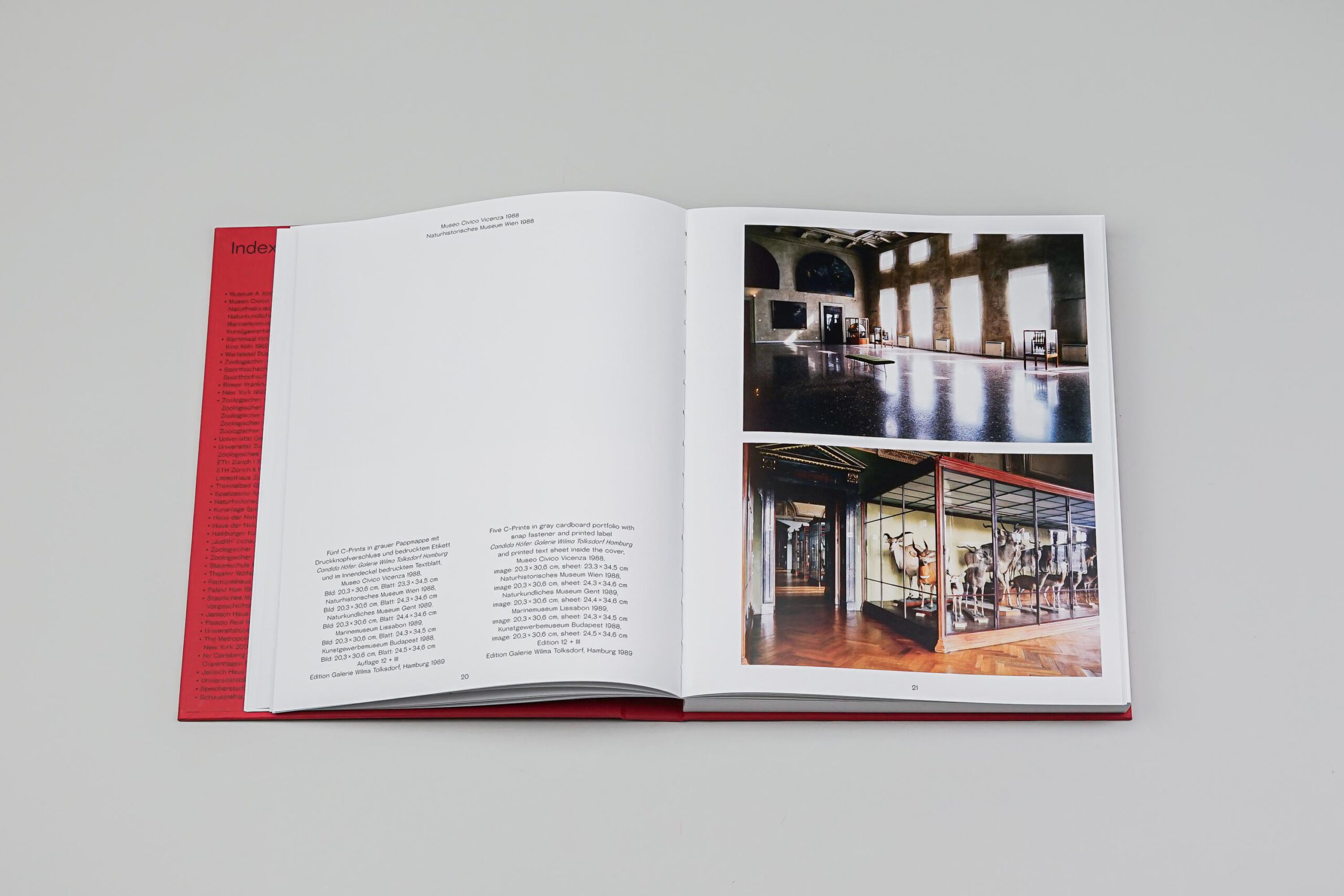
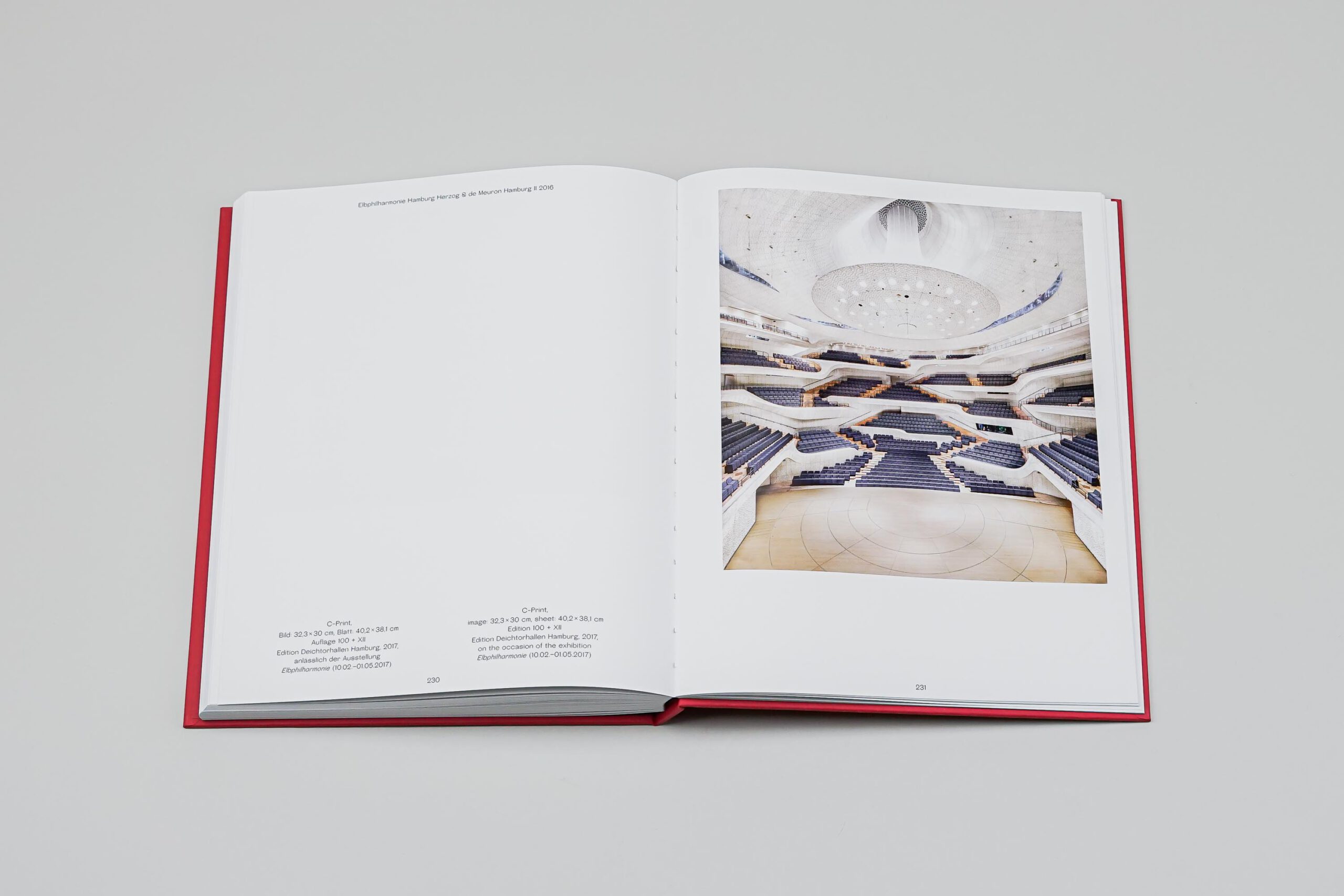
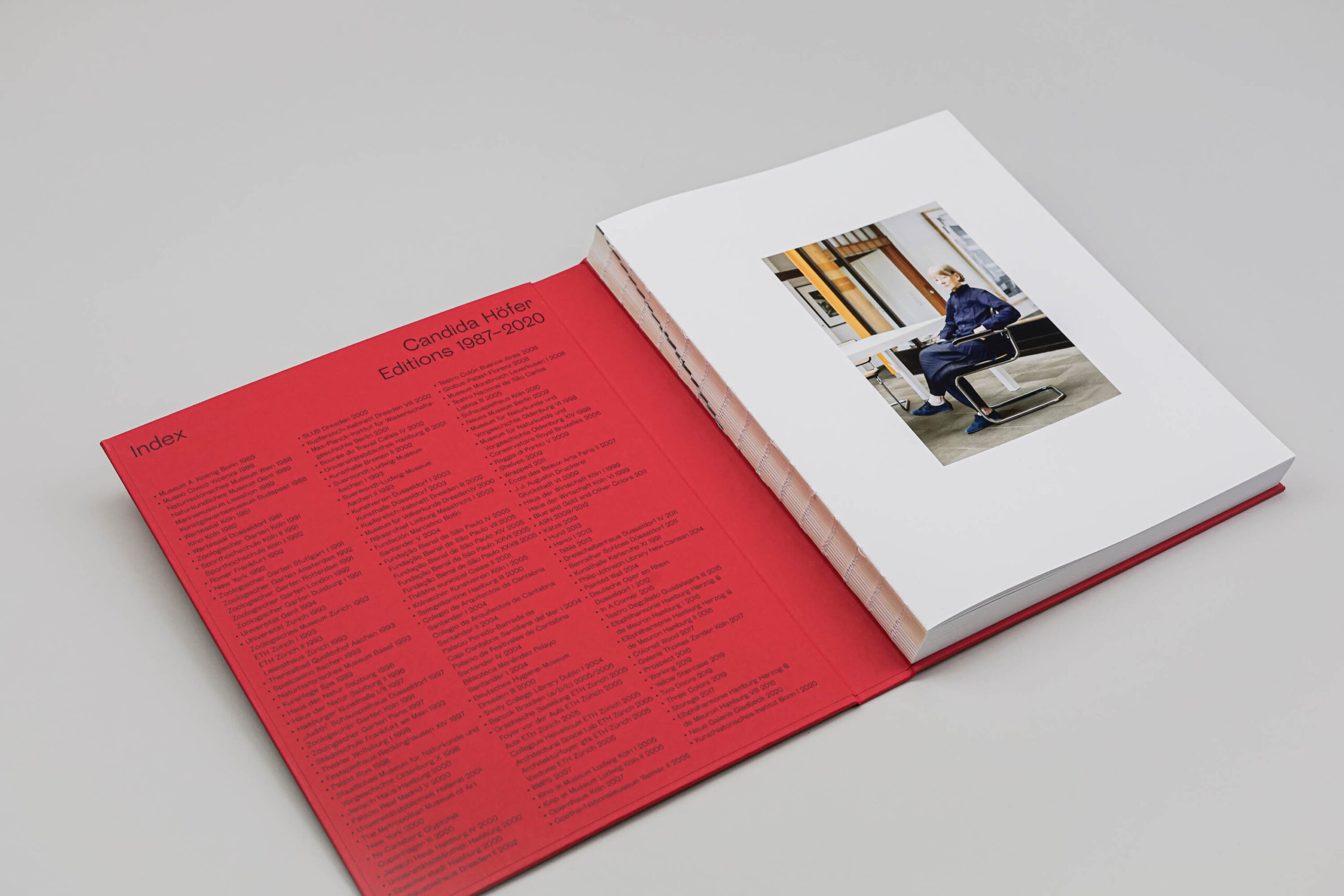
Candida Höfer
Editions 1987–2020
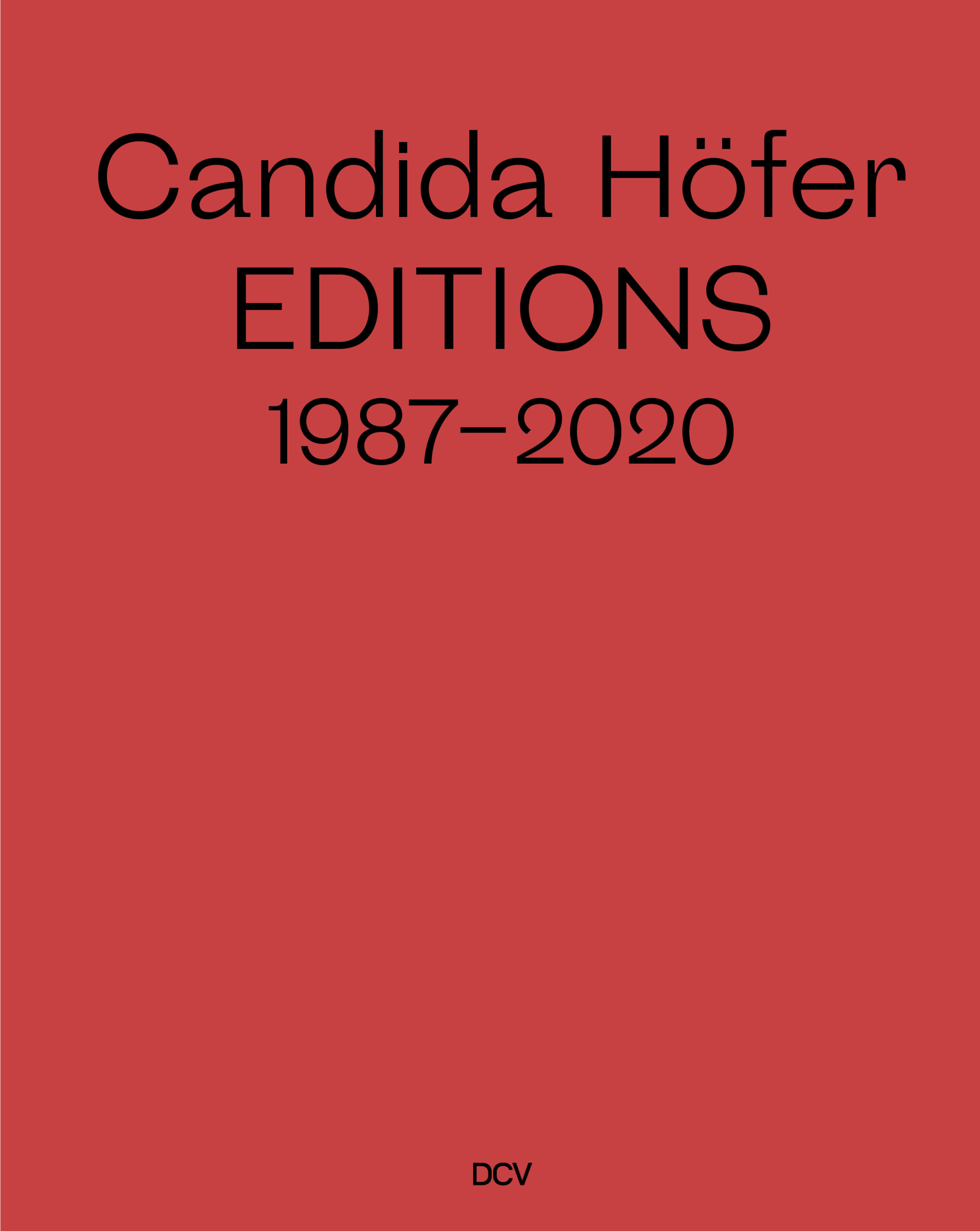 | |
|---|---|
| Editor(s) | Anne Ganteführer-Trier |
| Author(s) | Anne Ganteführer-Trier |
| Design | Book Book, Berlin |
| Cover | Hardcover with open spine |
| Size | 21 x 26 cm |
| Pages | 260 |
| Illustrations | 145 |
| Language(s) | German, English |
| ISBN | 978-3-947563-85-2 |
All of Candida Höfer’s Editions in One Book
Candida Höfer’s (b. Eberswalde, 1944) shots of deserted libraries, opera houses, concert halls, churches, and museums have made her a member of the international photographic avant-garde. One strand in her acclaimed oeuvre are editions—photographic prints in small formats issued in larger numbers—that Höfer produces to support institutions and art publishers. Gathered for the first time in this book, with an introductory essay by Anne Ganteführer-Trier, the around one hundred such editions she created between 1987 and 2020 offer a representative cross-section of Candida Höfer’s art.
Candida Höfer studied in the first photography class of Bernd Becher at the Kunstakademie Düsseldorf. Her works have been exhibited at documenta 11 and in 2003 she represented Germany at the 50th Biennale di Venezia alongside Martin Kippenberger.
THE DOCUMENTARY
Film: Candida Höfer – Editions from DCV on Vimeo.
Video embedding powered by Webilop
Description
Candida Höfer editions ’s (b. Eberswalde, 1944) shots of deserted libraries, opera houses, concert halls, churches, and museums have made her a member of the international photographic avant-garde. One strand in her acclaimed oeuvre are editions—photographic prints in small formats issued in larger numbers—that Höfer produces to support institutions and art publishers. Gathered for the first time in this book, with an introductory essay by Anne Ganteführer-Trier, the around one hundred such editions she created between 1987 and 2020 offer a representative cross-section of Candida Höfer’s art.
Candida Höfer studied in the first photography class of Bernd Becher at the Kunstakademie Düsseldorf. Her works have been exhibited at documenta 11 and in 2003 she represented Germany at the 50th Biennale di Venezia alongside Martin Kippenberger.
Limited Artist Edition available
Die englische Ausgabe finden Sie hier. Candida Höfer Editions
In den 1970er-Jahren und legte sie eine lange kreative Pause ein, in der sie sich nach dem Umzug nach Omaha, Nebraska, intensiv um die Gründung verschiedener Restaurants und die Entwicklung eines ganzen Altstadtquartiers kümmerte. Doch seit Beginn des neuen. Jahrhunderts hält sie atemberaubende neo-barocke. Stillleben, bestehend aus Blumen, Früchten, frisch erlegten Tieren, antiken Gläsern und illuminierenden Kerzen in großen Bildformaten fest. die kunst der gesellschaft neue nationalgalerie candida höfer kaufen
Hier ist seine Website und. link zu einem anderen buch Candida Höfer Editionen Das Markenzeichen von. Jeff Wall (geb. 1946 in Vancouver, lebt und arbeitet in Vancouver) sind großformatige Dialeuchtkästen, auf denen er sorgfältig komponierte Szenen wie Film-Stills präsentiert. Der studierte. Kunsthistoriker knüpft mit seinen Werken vielseitige Verbindungen zur. Kunstgeschichte und wird aufgrund seiner aufwendigen Inszenierungen immer wieder mit und den Meistern der Moderne verglichen. Mit einem besonderen Fokus auf Konstellationen, und die das fotografische Medium in. Form einer Spurensuche präsentieren, ermöglicht das Buch einen neuen Blick auf Arbeiten des Künstlers, die bisher selten in Ausstellungen gezeigt wurden. Jeff Wall studierte. Kunstgeschichte an der University of British Columbia, Vancouver, sowie am Courtauld. Institute of Art, London. Seine Arbeiten wurden unter anderem im Museum of Modern Art, New York, in der Tate Modern, London, und im Art Institute of. Chicago ausgestellt. 2008 erhielt er den Audain-Preis für sein Lebenswerk. Candida Höfer bonn Tate Modern, London, und im Art Institute of. Chicago ausgestellt. 2008 erhielt er den Audain-Preis für sein Lebenswerk. Candida Höfer bonn Das Markenzeichen von. Jeff Wall (geb. 1946 in Vancouver, lebt und arbeitet in Vancouver)
Additional information
 | |
|---|---|
| Editor(s) | Anne Ganteführer-Trier |
| Author(s) | Anne Ganteführer-Trier |
| Design | Book Book, Berlin |
| Cover | Hardcover with open spine |
| Size | 21 x 26 cm |
| Pages | 260 |
| Illustrations | 145 |
| Language(s) | German, English |
| ISBN | 978-3-947563-85-2 |




















